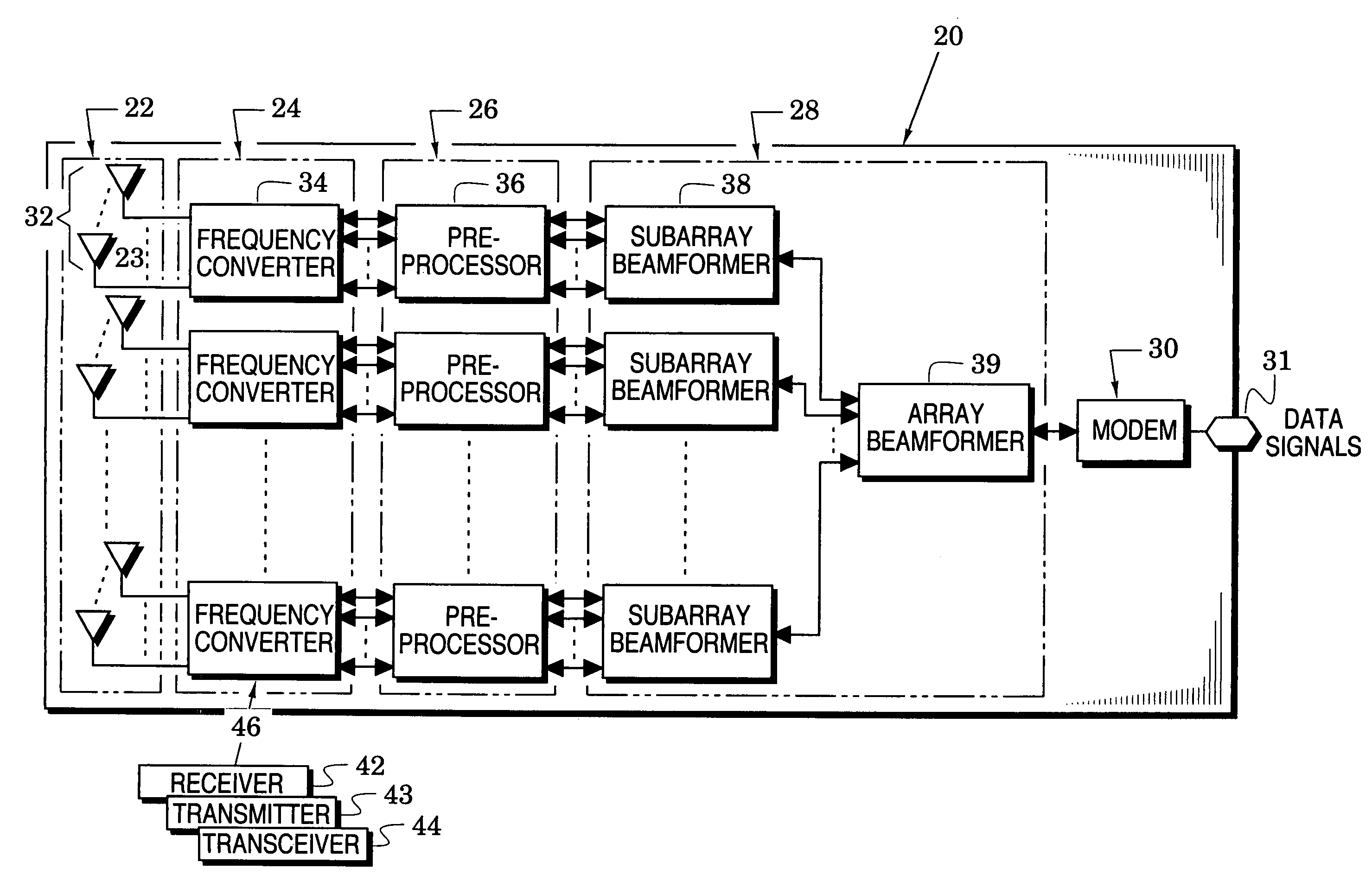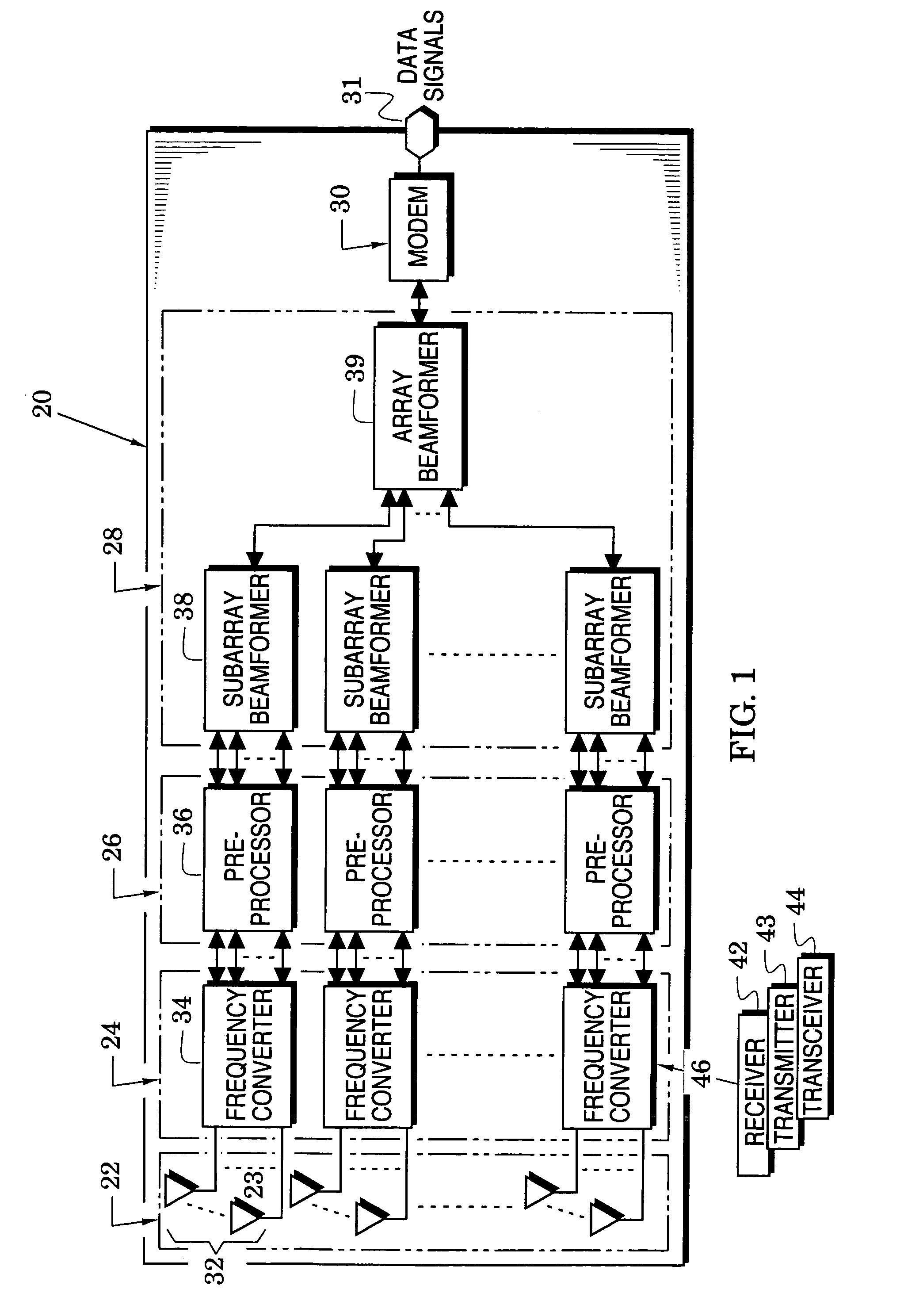Adaptive beamforming methods and systems that enhance performance and reduce computations
a beamforming and adaptive technology, applied in the field of wireless communication systems, can solve the problems of inability to identify the signal of interest, inability to adapt to the transmitted signal, and resultant estimation of the transmitted signal is then in error, so as to facilitate optimization of spatial information, reduce computational complexity, and facilitate single matrix inversion
- Summary
- Abstract
- Description
- Claims
- Application Information
AI Technical Summary
Benefits of technology
Problems solved by technology
Method used
Image
Examples
Embodiment Construction
[0017]Attention is initially directed to FIG. 1 which illustrates a wireless communication system embodiment 20 that includes an array 22 of antennas 23, a radio-frequency (RF) frequency converter 24, a preprocessor 26, a beamformer 28 and a modulator / demodulator (modem) 30. The RF converter is coupled to the antenna array 22 and the preprocessor 26 couples the RF converter to the beamformer 28. The modem 30 is coupled between the beamformer and a system data port 31.
[0018]In at least one embodiment of the invention, the antenna array 22 is partitioned into subarrays 32, the RF converter 24 is partitioned into frequency converters 34, the preprocessor 26 is partitioned into preprocessors 36 and the beamformer 28 is partitioned into subarray beamformers 38 and an array beamformer 39. With reference to these element partitions, each frequency converter 34 is coupled to a respective subarray 32 of antennas 23 and each of the preprocessors 36 is coupled between a respective frequency co...
PUM
 Login to View More
Login to View More Abstract
Description
Claims
Application Information
 Login to View More
Login to View More - R&D
- Intellectual Property
- Life Sciences
- Materials
- Tech Scout
- Unparalleled Data Quality
- Higher Quality Content
- 60% Fewer Hallucinations
Browse by: Latest US Patents, China's latest patents, Technical Efficacy Thesaurus, Application Domain, Technology Topic, Popular Technical Reports.
© 2025 PatSnap. All rights reserved.Legal|Privacy policy|Modern Slavery Act Transparency Statement|Sitemap|About US| Contact US: help@patsnap.com



